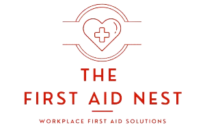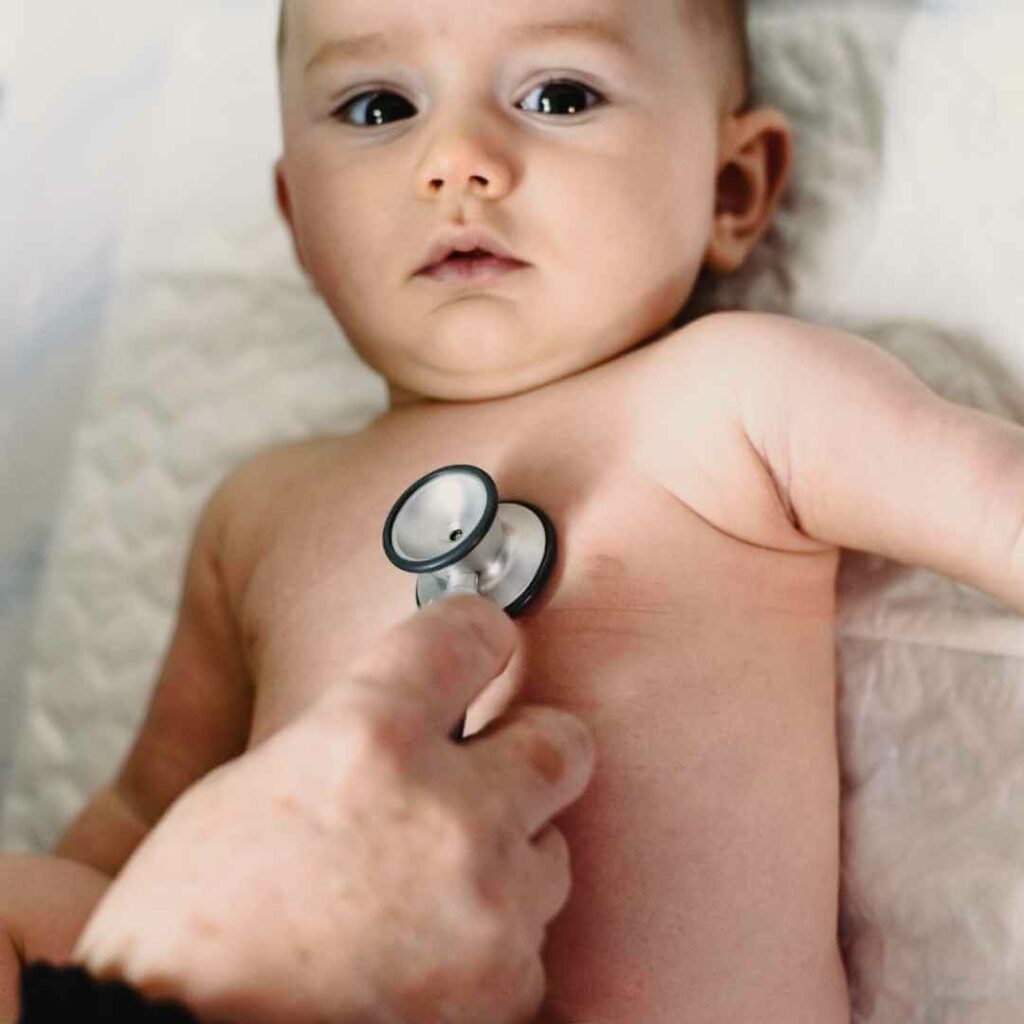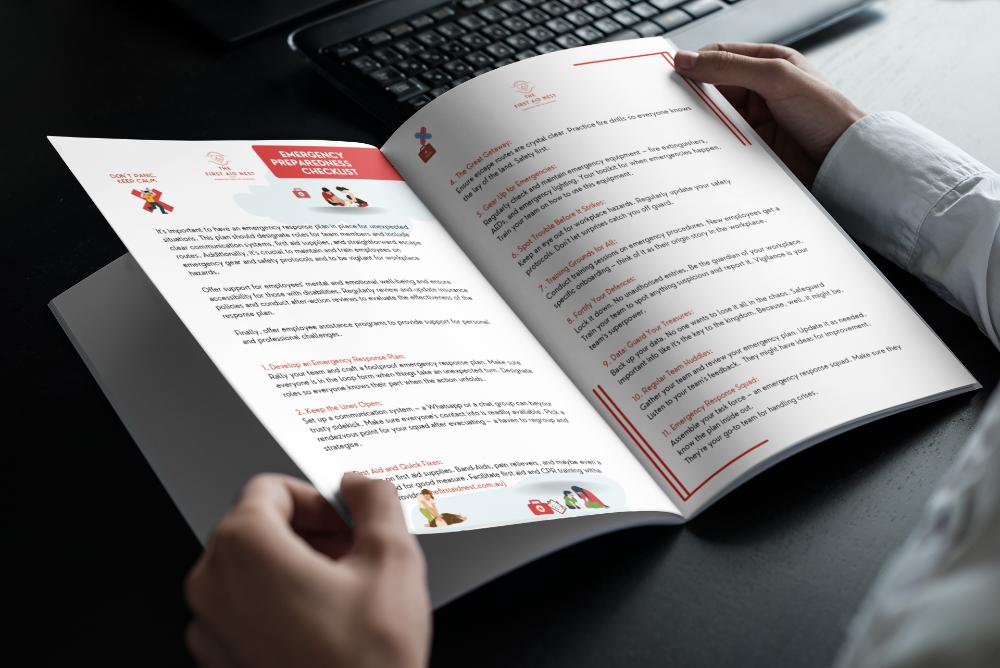Baby CPR – When & How To Perform
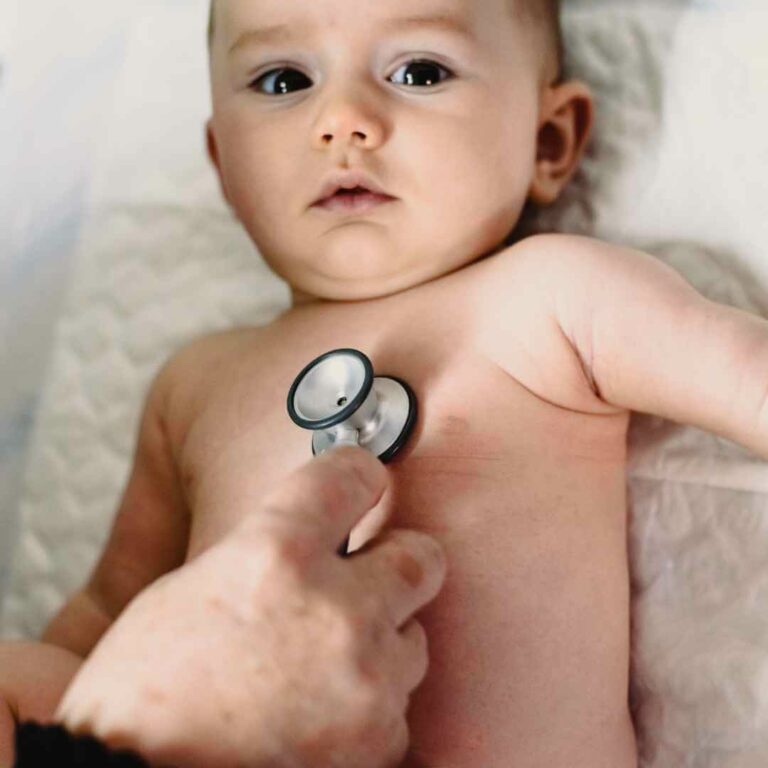
Infant CPR in Australia
Performing infant CPR on your baby has to be the most unthinkable situation ever, but guess what? It literally takes a matter of minutes to learn. It is not over complicated and it will make you feel so much more confident.
The action of infant CPR on a baby is very simple once you get the hang of it, but like any first aid emergency, it’s the trauma and the nature of the situation that is the hurdle.
So let us take the complication out of it and describe what you would need to do and when you need to do it.
First a list to simplify it then we can go into more detail…
- Is the child breathing or breathing normally?
- NO? Call an ambulance
- Commence CPR on the floor
- Give 30 chest compressions
- Give 2 rescue breaths
- Repeat until ambulance arrives or child recovers
Ok, so let’s go into a bit more detail. An infant is described as a child under the age of 12 months.
Steps for infant CPR in Australia
Danger
If you find your baby unresponsive, you must first scan for any danger. Are they holding an electrical cord? Is there water on the floor where they are? Are they under a fallen object?
Remove them from any imminent danger – this is the advice above all else. There is no sense in commencing first aid if the danger is still present.
Response
Give the baby a little shake by the shoulders, and call their name. Is there any response at all?
Maybe they open their eyes? Maybe they move? Great! Pop them in the recovery position either in your arms or on the floor and call an ambulance, as we still do not know exactly what happened and why they were momentarily unresponsive.
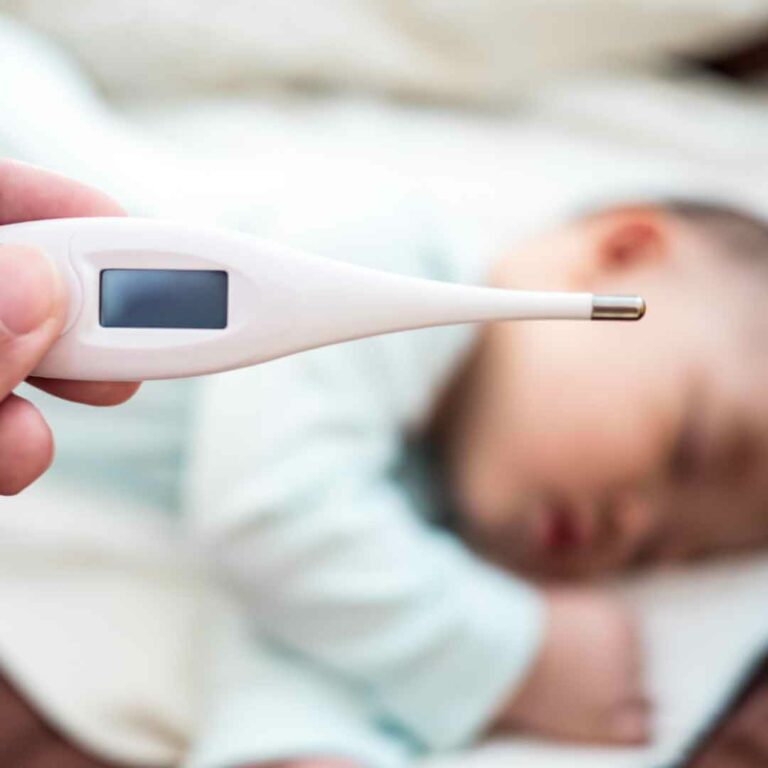
Send for help
If they don’t respond, we still send for help at this point – call an ambulance or ask someone you are with to call the ambulance and open the door.
Airway
Now the ambulance is on its way, you must check the airway. With an infant, we dont want to over extend the airway, so we place the head in a neutral position. This means that the head is not bent back and the chin is also not on the chest, just straight facing up to the sky.
Open the jaw and have a look inside.
Is there fluid or vomit?
If yes, roll them onto their side and help the fluid come away by gently using your finger just inside the gum and front of the mouth. DO NOT place a finger in a sweep deeply to the back of the throat. This can lodge something further back and cause more damage to the situation if there is a foreign object back there.
If there is nothing in the airway, we then need to check the breathing. If there is a foreign object there, we still need to check the breathing. If they are breathing normally, we start choking first aid, but if they are not breathing we start CPR.
How do you check for breathing?
This is where we do the Look, Listen, Feel method.
Place your cheek down just a few mm away from babies mouth, looking towards the feet. Can you see the chest rise?
Can you hear any regular strong breath sounds?
Can you feel the expiratory breath on your cheek?
If the child is breathing normally, place them in the recovery position in your arms or on the floor and await the ambulance.
If they are not breathing normally or at all, start CPR.
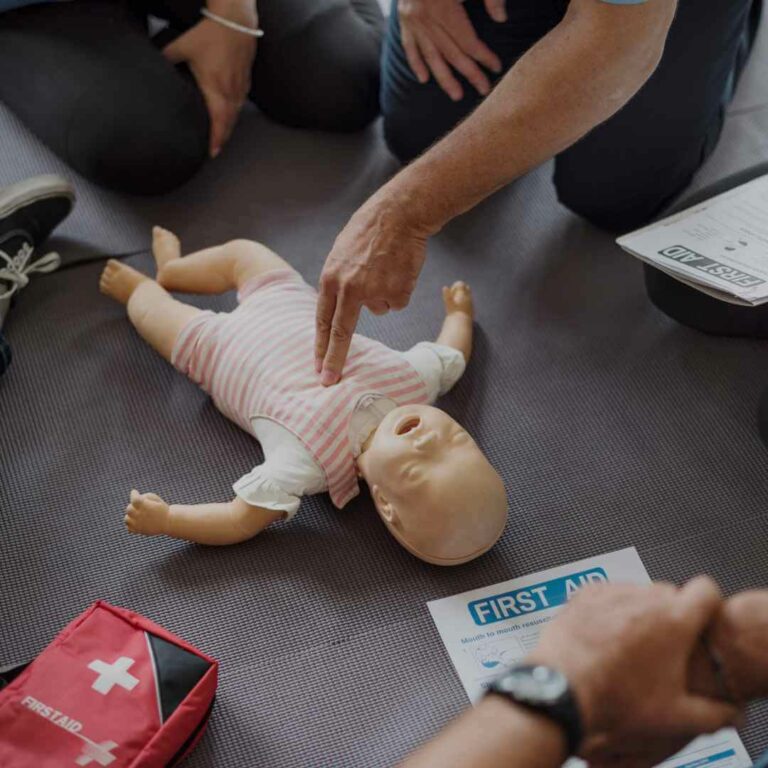
CPR for infants in Australia
Make sure the baby is on a hard surface on the floor. Do not perform CPR on a bed or sofa. You need the compressions to produce maximum impact.
Place 2 fingers in the centre of the chest between the nipples and give 30 compressions, short and sharp at a rate of two per second (or 100-120 per minute – I think this sounds more complicated though). You need the compression to reach a ⅓ of the depth of the chest. I tend to place my other hand on the forehead to support the head during compressions.
If you have very small fingers and they become sore, and you feel the compressions are not powerful enough, you can use the heel of the hand instead. Just remember that you are much stronger this way so watch the depth of the compression.
Once you have completed the compressions, go straight to the rescue breaths.
Ensure the baby’s head is in the neutral position. A baby’s airway is like a plastic straw. If it is bent too far back or forwards
With a small baby you can place your mouth around the baby’s mouth and nose, just make sure there is a good seal so no air escapes. Otherwise pinch the nose and just form a good seal around the child’s mouth. Give a short breath, around 1-2 seconds, with your hand on the baby’s chest and feel for chest rise. For an infant you only need to expel the contents of your cheeks.
Continue with 30 chest compressions and 2 rescue breaths continuously until help medical arrives, the baby recovers or you become physically exhausted.
Phew…. I know it sounds like a lot, but when you see it demonstrated it all comes together in more of a memorable pattern.
I hope you will never have to attend to your child or someone else’s in this situation, but if you did, you would be well prepared after learning from us.
Want more? We’ve got you covered…
Our Baby First Aid Courses
Our baby first aid courses are available in person in your home and online. We run classes in your home with groups of 2, 4 or up to 10 in Sydney & Melbourne and you can book in 3 easy steps!
- Pick your class
- Follow the prompts to purchase
- We will contact you within 24 hours to lock in your date of choice
Our First Aid Certificate Courses
We run most of the popular first aid courses Australia wide. HLTAID011 Provide First Aid, HLTAID009 Provide CPR, HLTAID012 Provide First Aid in an Education & Care Setting, RAMOAP (anaphylaxis), Mental Health first aid and CPR/LVR to name a few.
Book your public spot online or contact us if you have a group of 5+ people for onsite training.
Here are some other resources you may enjoy!
FREE GUIDE: Your Virtual Baby First Aid Kit
FREE GUIDE: Introducing Common Allergy Foods & Allergic Reactions
FREE Workplace Emergency Preparedness Plan: Grab this at the bottom of every page!
Follow for baby & child first aid and allergy info and tips on Instagram, TikTok & Facebook all @thenestcpr
